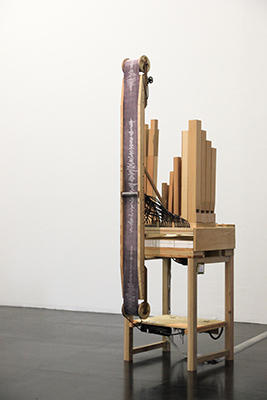What is “culture”? One common theory defines culture as that which distinguishes humans from nature, and in Western-style scientific disciplines, often the two are conceived as being in opposition. The common model has it that culture is something that has risen “above” nature. Hence, natural processes both underlie, and potentially undermine, cultural processes, and culture must rule and master nature, including “human nature.” Other typical scientific conceptions state that either we are entirely determined by nature and its laws, and culture is only an illusion, or the exact opposite, that everything is a cultural “construction,” including our ideas of nature. Alongside these common ideological standpoints and trenchlines, there has been the explosive growth of industrial culture, of science and technologies that have made it increasingly difficult to say where “our” culture begins and “nature” ends.
In her sculptures, installations, and videos, Elisa Strinna investigates and tests such distinctions. She explores the way they structure our perception and our fields of knowledge. She does this not through theoretical reflection, but by closely examining various natural materials. As Strinna studies the information intrinsic to these elements of nature, various narratives come to life, which reveal intrinsic “cultural” aspects of nature, and challenge any narrow conception of both cultural and natural processes. What is left, instead, are differences of scales, times, and languages, which demand different forms of translation.
Seismic Symphonies—Taiwan Symphony is a sound installa- tion and sculpture. It translates earthquake seismograms into a symphony, played on an organ. The organ reads the analogical recording of the seismic shock like a score. The earthquake that is “played” here took place in Taiwan in 1999 and was the country’s strongest earthquake of the last twenty years. Seismic Symphonies - Taiwan Symphony is also a symbolic inversion: the instrument of the organ is most commonly used in Christian churches, and its sounds are derived from the heavens and symbolize cosmic harmony. But here it is the earth, “nature,” the ground beneath our feet that is moving. It speaks to us not of harmony, but of our fragility, undermining our fantasies of mastery.
Elisa Strinna, born 1982 in Italy, lives and works in Venice

